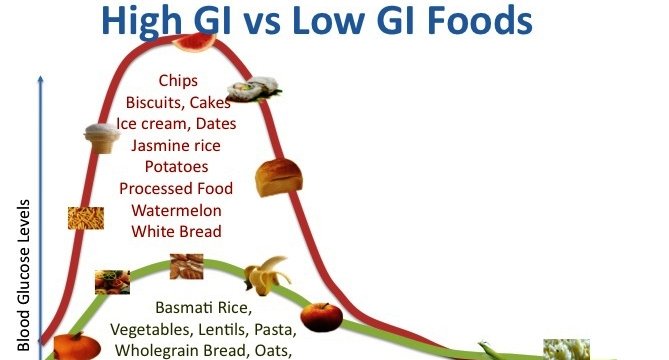Chances are if you have paid any attention to the latest trends in nutrition, you have likely heard of the term Glycemic Index (or GI). Research has shown that it has been associated with both weight loss and diabetes (since it has an impact on blood sugar and insulin levels) for the past forty years. However, it is still not as well-known as it arguably should be. Keep reading to learn more about why the GI is essential in losing weight and making sure to keep it off. This is the case because these foods allow your body to stay within its natural “fat-burning state,” which increases the likelihood of weight loss. It might seem complicated at first, but in reality it is really simple.
The Basics
In 1980 the Glycemic Index was created by a University of Toronto professor named Dr. David J. Jenkins. However, since then, many other universities have conducted studies on the topic.

According to the Harvard Health Review in 2014, fat is not the only culprit when it comes to losing weight. Refined carbohydrates are also to blame for weight gain.
So what is the Glycemic Index?
It is a score out of 100 that is associated with different foods. This score is based off of how fast the body’s blood glucose levels (the technical term for blood sugar levels) is increased by certain foods. Essentially the Glycemic Index represents the rise in your blood sugar levels that takes place two hours after eating and helps to explain how our bodies process carbohydrates.
It is a score out of 100 assigned to foods based on how quickly those foods cause increases in “blood sugar levels” (actually blood glucose levels.)
If a food has a score GI score that is less than 55 it is considered to be low on the glycemic index. These foods release glucose into the body’s bloodstream slowly and at a steady pace, which is what we want to happen. Those foods that have a GI score between 55 and 69 are considered to be medium-GI foods. That means that any food with a GI score of 70 or more is considered a High-GI food. These High-GI foods cause blood sugar levels to spike and release glucose quickly, which is not ideal.
Therefore, one way to lose weight is to gain a better understanding of which foods are low, medium, and high level GI foods. For instance, foods that are low-GI foods include: most fruits and vegetables, whole grains, beans, lentils, and legumes. These foods do not cause your blood glucose levels to spike and release glucose in the blood slowly. However, unfortunately is not so simple. Although it is common sense to stay away from foods that are highly processed and are high in sugar, it isn’t all that easy. For example, some vegetables actually have a high GI-level. For instance, watermelon is one fruit that has a high GI-level, a whopping 72 out of 100! Meanwhile, spaghetti has a GI score of 22.
Therefore, it is important to gain an understanding of where certain foods fall on the glucose index. We would suggest keeping a printed list of common foods and their associated GI scores and plan your meals using this information. Some other handy tips are to stay away in refined white flours like the ones found in white bread, and other high-GI foods like white rice, potatoes, packaged cereals, and dessert foods like cakes and donuts. Therefore, to keep it in the simplest terms- do yourself a favor if your goal is to lose weight and eat foods with lower GI scores.
More from Things Health
-
The Common Cold
Common cold, also known simply as a cold, is a viral infectious disease of the upper respiratory tract that primarily affects the nose. The throat,…
-
Multiple Concussions May Inhibit the Brain's Ability to Use Energy
Head injuries have become increasingly common, with most people not thinking twice about suffering a hit to the head during sports or physical activity. And…
-
The Most Effective Cough and Cold Remedies
It’s that time of year again, runny noses, foggy heads and sore throats are plaguing several of us, best known as “cold and flu season”.…
-
Spending Time Alone Is The Only Way To Get Actual Rest
Imagine this. It is a Saturday morning, and fall sun is falling throughout the blinds. There is a sit down elsewhere, a book, and a…
-
10 Effective Ways to Prevent and Cure Heartburn
Funnily enough, heartburn doesn’t have much to do with your heart. Heartburn occurs due to the release of stomach acid (also referred to as regurgitated…


















